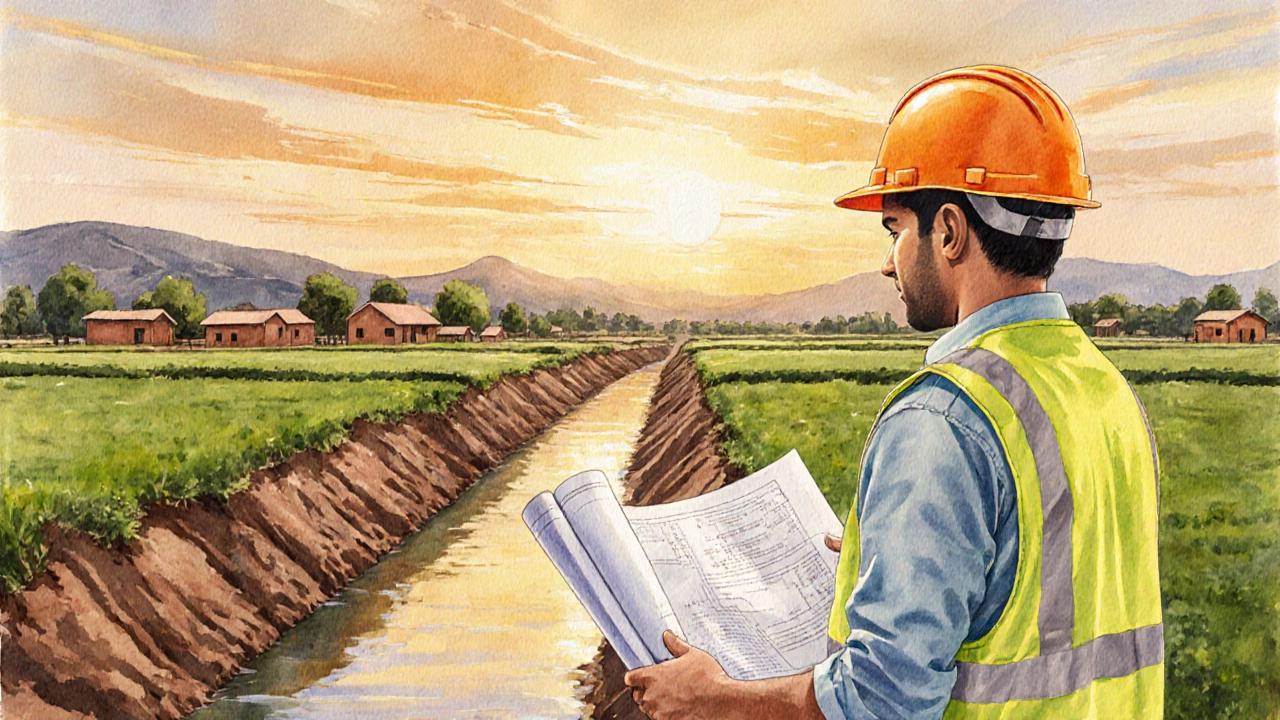Government Job Competition Calculator
Calculate your competition ratio using real data from Indian government recruitment. Input your applicants and vacancies to see if you're in a low-competition (AVR < 5:1) or high-competition category.
When you start eyeing a government job with least competition is a public sector position that historically attracts fewer applicants per vacancy, making the selection process less cut‑throat, the first question is: which posts actually fit that description? The good news is that not every government role is a marathon of millions of aspirants. Some niches stay relatively quiet, offering a realistic shot at a stable career without the endless grind of massive coaching classes.
Key Takeaways
- Clerical and data‑entry posts under the Staff Selection Commission (SSC) often see the lowest applicant‑to‑vacancy ratios.
- Technical junior‑engineer roles in state public service commissions (PSC) can be surprisingly under‑applied, especially in non‑metropolitan districts.
- Railway Recruitment Board (RRB) lower‑grade positions (e.g., Assistant, Ticket Collector) have moderate competition but still lower than high‑profile exams like UPSC.
- Targeting niche departments (e.g., Forest Service clerks, Minor Irrigation officers) can improve your odds dramatically.
- Preparing smart-focus on eligibility, vacancy trends, and localized recruitment-outweighs sheer study volume.
How Competition Is Measured
Before we list the low‑competition jobs, understand the metric behind the claim. Most analysts look at the applicant‑to‑vacancy ratio (AVR), which is simply:
AVR = Number of applicants ÷ Number of posts advertised
An AVR below 5:1 is considered low for Indian government recruitment. Data comes from official notification archives, Right‑to‑Information (RTI) responses, and industry reports. For instance, the Staff Selection Commission (SSC) posted 12,000 clerk vacancies in 2022 and received around 46,000 applications, giving an AVR of 3.8:1-well within the “low competition” bracket.
Jobs That Consistently Show Low Competition
Below are the roles that repeatedly register AVRs under 5:1 across the past five years.
- Clerical (General) - SSC: Tabular Assistant, Data Entry Operator, and Junior Clerk positions typically attract 3‑4 applicants per seat.
- Assistant Sub‑Inspector (ASI) - State Police PSC: While higher‑rank police posts are fiercely contested, ASI vacancies in smaller districts see AVRs between 4 and 5.
- Junior Engineer (Civil/Electrical) - State PSC: Especially in states with extensive rural infrastructure programs, these posts often have AVRs below 4.
- Railway Ticket Collector - RRB: The RRB’s 2023 Ticket Collector drive recorded an AVR of 4.2, lower than most railway technical exams.
- Forest Guard - State Forest Department: Limited awareness and remote posting locations keep competition low, with AVRs around 3.5.
- Minor Irrigation Officer - State PSC: Niche agricultural posts that see AVRs between 2.8 and 3.9.
- Junior Translator (Hindi‑English) - SSC: Specialized language requirements narrow the applicant pool.

Why These Posts Remain Under‑Applied
Several factors explain the lower numbers:
- Location bias: Remote or less‑glamorous postings deter candidates willing to relocate.
- Awareness gap: Many aspirants focus on high‑visibility exams like UPSC, ignoring peripheral notifications.
- Specific skill sets: Roles demanding niche skills (e.g., minor irrigation) filter out general applicants.
- Limited career ladders: Perceived slower promotion tracks make some posts less attractive.
Boosting Your Chances in Any Government Exam
Even if you target a low‑competition job, a solid strategy can tip the scales further.
- Track vacancy trends: Subscribe to official portals (SSC, RRB, State PSC websites) and set Google Alerts for keywords like “clerk vacancies 2025”.
- Meet eligibility early: Ensure age, educational qualifications, and physical standards are verified well before the application window.
- Localize your preparation: Focus on the syllabus of the specific post-many low‑competition roles have narrow subject lists (e.g., General Awareness, Reasoning, and English).
- Leverage past papers: Analyze previous year question papers; the pattern rarely changes for clerical and junior‑engineer exams.
- Stay physically fit: Positions like Forest Guard have physical standards; a simple routine can prevent disqualification.
Comparison of Popular Low‑Competition Posts
| Post | Conducting Body | Typical AVR | Key Eligibility | Top Recruiting States |
|---|---|---|---|---|
| Clerical (General) | Staff Selection Commission (SSC) | 3.8:1 | Bachelor’s degree, 18‑32 yrs | All India (high in UP, MP) |
| Junior Engineer (Civil) | d>State Public Service Commission (PSC)3.5:1 | Diploma in Civil Eng., 18‑30 yrs | Madhya Pradesh, Karnataka | |
| Ticket Collector | Railway Recruitment Board (RRB) | 4.2:1 | 10+2 with English, 18‑28 yrs | All zones (higher in East) |
| Forest Guard | State Forest Dept. | 3.1:1 | 12th pass, 18‑25 yrs, fitness | Kerala, Uttarakhand |
| Minor Irrigation Officer | State PSC | 2.9:1 | B.Tech Agriculture, 18‑35 yrs | Punjab, Haryana |

Common Pitfalls to Avoid
Even low‑competition posts have traps that can disqualify you.
- Missing the deadline: Small notifications often have short windows; set calendar reminders.
- Incorrect documentation: A typo in the name or missing certificates leads to rejection.
- Neglecting physical standards: For posts like Forest Guard, failing the physical test nullifies your written marks.
- Over‑relying on luck: Treat each application as a serious contest-prepare for the written test and interview.
Putting It All Together - Your Action Plan
Here’s a quick roadmap you can follow today.
- Identify two or three low‑competition posts from the table above that match your qualifications.
- Subscribe to the official notification RSS feeds of SSC, RRB, and your state’s PSC.
- Download the latest syllabus and collect past 5 years’ question papers for each chosen post.
- Allocate 1‑2 hours daily: 30min for eligibility verification, 1hr for focused study, 30min for mock tests.
- Complete a health check‑up if the post demands physical fitness; keep a copy ready for upload.
- Apply as soon as the notification goes live; double‑check every field before hitting submit.
- Prepare a concise “self‑presentation” for the interview stage-highlight any relevant internships or volunteering.
Follow these steps, and you’ll turn a modestly competitive posting into a realistic career win.
Frequently Asked Questions
Which government job has the lowest applicant‑to‑vacancy ratio?
Historically, the SSC Clerical (General) posts-such as Tabular Assistant and Data Entry Operator-show the lowest AVR, often below 4:1 across the country.
Do low‑competition jobs offer good salary and growth?
While the starting salary may be modest compared to high‑profile services, most posts provide regular increments, pension, and a clear promotion path. For example, a Junior Engineer can advance to Senior Engineer within 5‑7 years.
How can I stay updated on vacancy notices?
Subscribe to the official websites (ssc.nic.in, rrbcdg.gov.in, state‑psc portals), use Google Alerts with keywords like “clerk vacancy 2025”, and follow reputable govt‑exam coaching channels on YouTube.
Is physical fitness mandatory for all low‑competition posts?
Only specific roles-such as Forest Guard, Police ASI, and certain railway positions-require physical standards. Clerical and engineering posts generally do not.
Can I apply for multiple low‑competition jobs at once?
Yes. Since each notification has its own portal, you can submit separate applications as long as you meet the eligibility for each and keep track of deadlines.





Write a comment